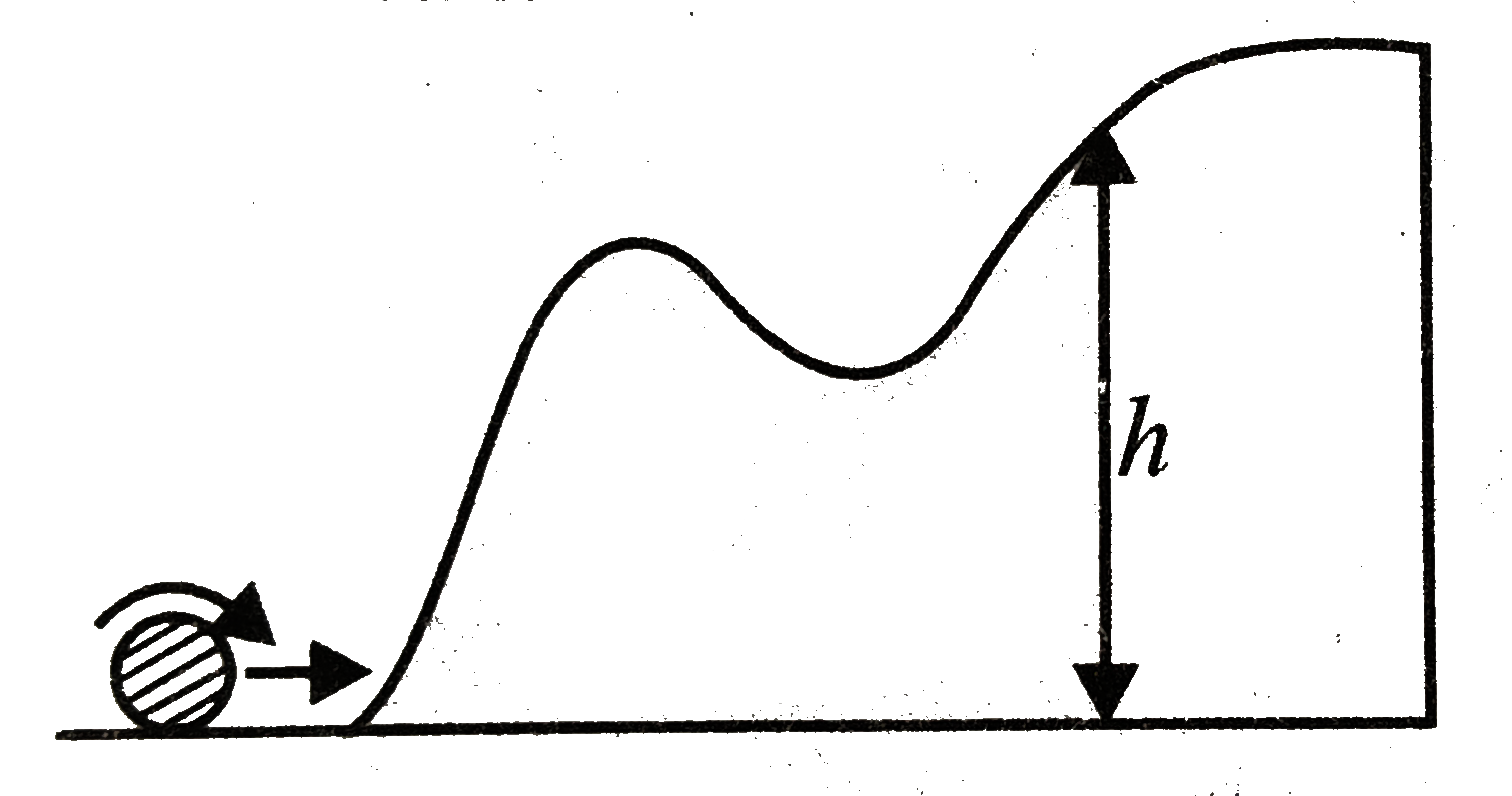A body of radius R and mass m is rolling horizontally without slipping with a unifrom speed v. It then rolls up in an inclined plane to a maximum height of h. If h =3v24g, determine the MI of the body about its axis of rotation.Solution in Assamese
Step by step video & image solution for A body of radius R and mass m is rolling horizontally without slipping with a unifrom speed v. It then rolls up in an inclined plane to a maximum height of h. If h =(3v^2)/(4g), determine the MI of the body about its axis of rotation. by Physics experts to help you in doubts & scoring excellent marks in Class 11 exams.
Updated on:21/07/2023Topper's Solved these Questions
- SYSTEM OF PARTICLES AND ROTATIONAL MOTIONBOOK - BINA LIBRARYCHAPTER - SYSTEM OF PARTICLES AND ROTATIONAL MOTIONEXERCISE - EXERCISE
61 Videos
- PROPERTIES OF SOLID BOOK - BINA LIBRARYCHAPTER - PROPERTIES OF SOLID EXERCISE - EXERCISE
65 Videos
- THERMAL PROPERTIES OF MATTER BOOK - BINA LIBRARYCHAPTER - THERMAL PROPERTIES OF MATTER EXERCISE - EXERCISE
119 Videos
Similar Questions
Define torque. State its dimensions.
View SolutionWhat is inter - atomic force ?
View SolutionDefine co-efficient of linear expansion.Dose it depend on unit of length?
View SolutionA body of mass M and radius r, rolling on a smooth horizontal floor with velocity v, rolls up an irregular inclined plane up to a vertical height (3v2/4g). Compute the moment of inertia of the body.

View SolutionA body of radius R and mass m is rolling smoothly with speed v on a horizontal surface. It then rolls up a hill to a maximum height h . If h = 3 v^2//4g . What might the body be ?
View Solutionद्रव्यमान M तथा त्रिज्या R का एक पिण्ड क्षैतिज तल पर बिना फिसले चाल v से लुढ़क रहा है। फिर एक पहाड़ी पर लुढ़कता अधिकतम ऊंचाई h तक चढ़ता है। यदि h=3v2/4g (i) पिण्ड का जड़त्व-आघूर्ण क्या है? (ii) पिण्ड की आकृति क्या हो सकती है? (घर्षण नगण्य मान लें)
View SolutionAn object of radius R and mass M is rolling horizontally without slipping with speed v . It then rolls up the hill to a maximum height h=3v24g . The moment of inertia of the object is ( g = acceleration due to gravity)
View SolutionA body of mass M and radius R is rolling horizontally without slipping with speed v . It then rolls up a hill to a maximum height h . If h = (5v^(2))/(6g) , what is the M.I of the body ?
View SolutionA body of mass .m. and radius .r. rolling on a horizontal floor with velocity .v., rolls up an inclined plane up to vertical height (3V^(2))/(4g) . Find the momentu of inertia of body and comment on its shape
View SolutionA body of mass .m. and radius .r. rolling on a horizontal floor with velocity .y., rolls up an inclined plane up to vertical height 3V24g. Find the moment of inertia of body and comment on its shape
View SolutionAn object of radius R and mass M is rolling horizontally without slipping with speed v . It then rolls up the hill to a maximum height h=3v24g . The moment of inertia of the object is ( g = acceleration due to gravity)
View SolutionA body of mass 'm' and radius 'r' rolling on a horizontal floor with velocity 'v', rolls up an inclined plane up to vertical height (3V^(2))/(4g) . Find the moment of inertia of body and comment on its shape.
View SolutionA body of radius R and mass m is rolling smoothly with speed v on a horizontal surface. It then rolls up a hill to a maximum height h. If h=3v2/4g. What might the body be ?
View SolutionA body of mass M and radius r , rolling on a smooth horizontal floor with velocity v , rolls up an irregular inclined plane up to a vertical height (3v^(2)//4g) . Compute the moment of inertia of the body.
View SolutionAn object of radius R and mass M is rolling horizontally without slipping with speed v . It then rolls up the hill to a maximum height h = (3v^(2))/(4g) . The moment of inertia of the object is ( g = acceleration due to gravity)
View Solution
